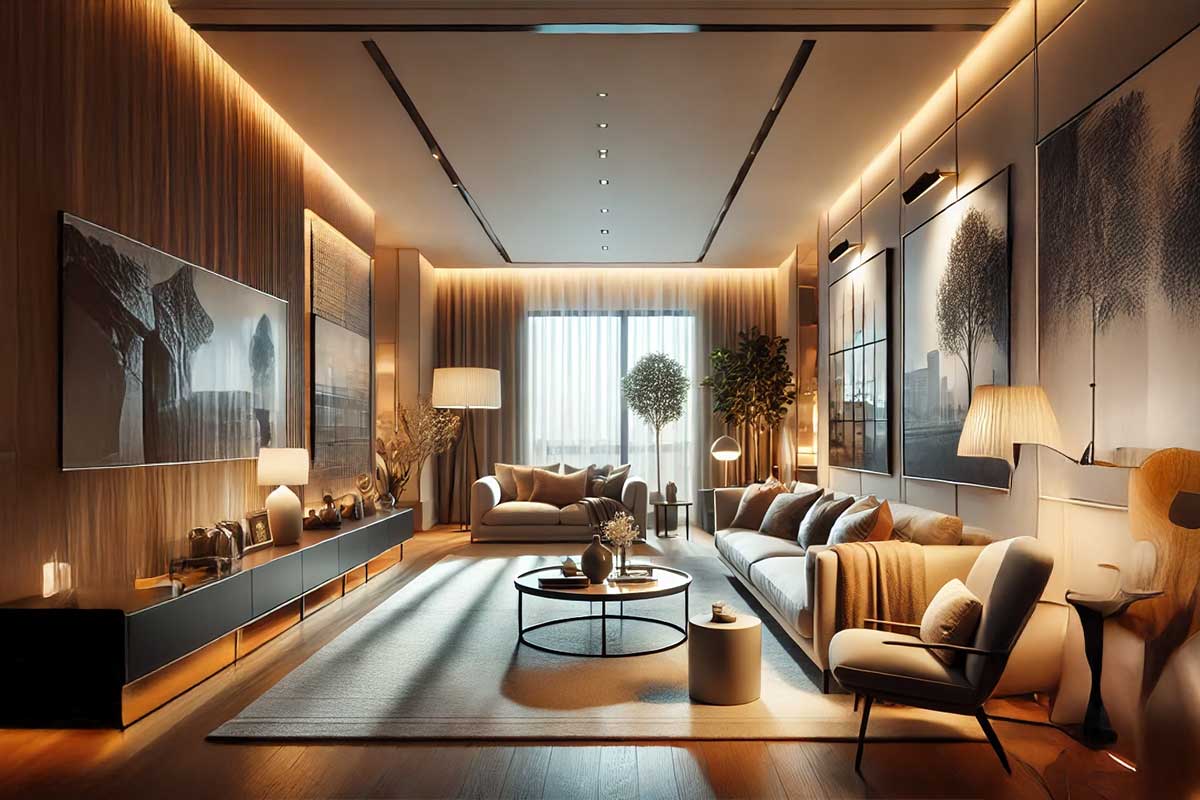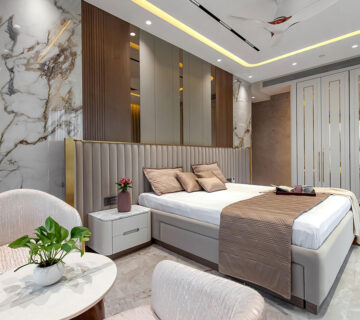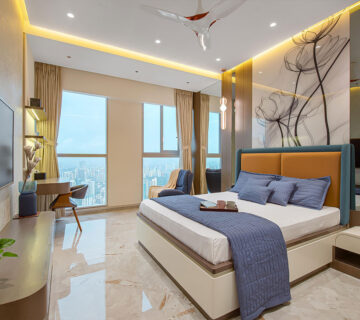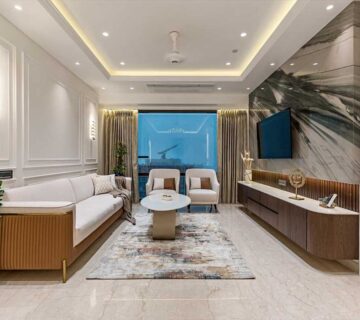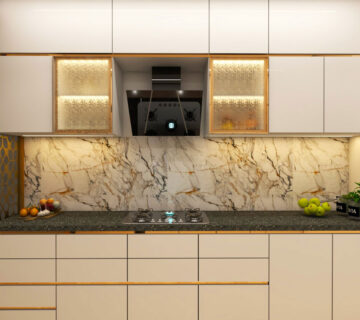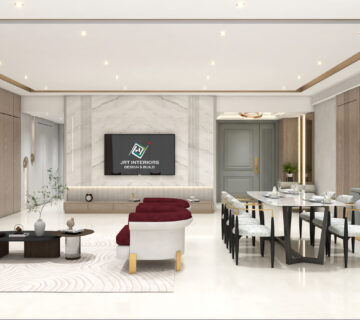When planning a design concept, it’s essential to consider lighting, as it can significantly impact the overall look and feel of a space. Light in interior designing not only enhances aesthetics but also influences mood and functionality. It plays a vital role in highlighting architectural details and creating the perfect ambiance. From setting the right atmosphere to improving the usability of a space, lighting is a blend of art and science. In this post, we’ll explore the importance of lighting in interior design, its different types, and how to use it effectively for the best results.
1. Setting the Mood and Atmosphere
Lighting affects the moods of someone in the room. For instance, light set at a low level in a cozy room can promote relaxation, like in a bedroom or living room. While on the contrary, lively and cold light can promote focus and energy showing that it is well suited for offices and even the kitchen.
A primary consideration when picking out lights is the colour temperature. It’s the gap between the soothing warm lights which begin at 2700K, stretching to 3000K and the cool lights that target 4000K to 5000K. The two extremes are suitable for two different purposes. Designers strategically use warm and cool lights in tandem so that they can accommodate different levels of tasks effortlessly in a single space.
2. Enhancing Aesthetics
Lighting is a great tool to help you focus on the beauty of the space. It can highlight details of architecture, shine on textures and improve the colors used. also let’s compare task vs ambient lighting. For example:
- Accent Lighting: For highlighting artwork, sculptures, or architectural features, accent lighting is used to create a focal point in a room. This is why spotlights and track lights are common choices for this purpose.
- Ambient Lighting: This is the background lighting of a space, giving general glow. Chandeliers, ceiling mounted fixtures and recessed lights are often ambient lighting.
- Task Lighting: For specific activities: reading, cooking, or working, task lighting is important and involves table lamps, undercabinet lights, and pendant lights.
Having various kinds of lights makes rooms look and feel more lively and authentic. The contrast between indirect and direct lighting adds depth and interest to the space. These designs enhance the aesthetic appeal of any area and provide both ambient and task lighting. The strategic use of accent lights can transform the atmosphere of a space. The interplay of these types of lighting creates depth and dimension, making spaces feel more vibrant and inviting.
3. Functionality and Practicality
It means that the lighting enhances the effectiveness of the space to fulfill the needs of the people who use it. For instance, the kitchen area should have general lighting while the home office should have direct lighting. Without enough light, one feels tired, unproductive and may even be a danger to themselves. To create a both beautiful and practical space, it is crucial to incorporate all the three types of lights; ambient, task and accent lights. A well illuminated space is convenient because it can be used for different purposes or can be used at different times for different occasions.
4. Creating Illusions of Space
Lighting can make a room look bigger, cozier, or more open – depending on how it is used. Using mirrors and lights properly in small spaces can make the space look and feel bigger. For instance, putting a light right by a mirror will bounce the light around the room, making it look bigger. Lighting can be employed to delineate areas and generate intimate atmospheres in larger spaces. Pendant lights above a dining table or a group of floor lamps in a seating area do the job of distinguishing between the functional regions of an open plan home.
5. Energy Efficiency and Sustainability
Contemporary lighting solutions are not only about beauty but also about energy conservation and environmental friendliness. This is because Energy-efficient LED lights have taken people’s eyes by storm due to their energy saving abilities, long lasting bulbs and the flexibility in use. More and more, smart lighting systems that enable the user to vary the brightness, color temperature, and in some cases the lighting time through an app or voice control are being employed by designers.
Light is also used in green lighting design to improve Natural lighting in homes. The use of large windows, skylights, and light reflecting materials helps in the maximization of daylighting thus reducing the need for artificial lighting systems in the building.
6. Emotional and Psychological Impact
Light has a deep impact on human feelings and psychology. Natural light improves mood and productivity, whereas low light can cause boredom and tiredness. Well-designed lighting systems in houses help in promoting comfort and well being. In business spaces, the lighting design impacts consumer behavior, causing them to retain a good perception about the brand.
For example, retail shops operate under welcoming and vibrant lighting to pull customers in, while restaurants use soft, glowing lights to craft an enjoyable atmosphere for mealtime. Designers create more functional spaces by considering effects of light on emotions.
7. Trends in Lighting Design
Lighting design is continually evolving, with new trends and technologies shaping the way we illuminate spaces. Some of the current trends include:
- Smart Lighting: Having smart home technology integrated for remote control and customization.
- Minimalist Fixtures: Modern, sleek, and simple designs that suit today’s homes.
- Layered Lighting Techniques: Using different kinds of lighting can make complex shapes and add depth to the illustration.
- Natural Materials: The use of eco friendly materials like wood, rattan and glass for stylish and stylish fixtures.
- Statement Lighting: Focal points are oversized or have a uniquely design of Statement light fixtures.
8. Tips for Effective Lighting Design
To make the most of lighting in interior design, consider the following tips:
- Plan Early: It is very important to incorporate lighting into the design process from the beginning in order to make sure it fits with the layout and decor of the space.
- Use Dimmers: Dimmers allow you to adjust the brightness according to the time of day or mood, adding versatility.
- Layer Lighting: For a well-rounded design, combine ambient, task, and accent lighting.
- Consider Scale: Use fixtures that are appropriate for the size of the room and its components.
- Focus on Color: In accordance with the above, it is crucial to match the color temperature of lights with the purpose and decor of the room. This simple step can have a significant impact on the overall atmosphere of any space.
- Test Placement: Experiment with the placement of lights to find the most effective positions.
9. Conclusion
More than fulfilling a basic need, lighting alters the overall mood of a structure making it an essential part of interior design. If one understands the fundamentals of lighting design, then combining the appropriate techniques and tools will enable one to form spaces which are appealing spectacles. A serene home, a busy workplace, or an elegant cafe, beautiful and purposeful, exceptional lighting is needed for all.
Even with the ever-changing world of design and interior trends, lighting is an integral part and will always stay relevant. With the rise in technology, lighting design has broadened which gives an opportunity for revolutionary and environmentally friendly solutions making Lighting Design an intriguing and necessary discipline in Interior Design.

